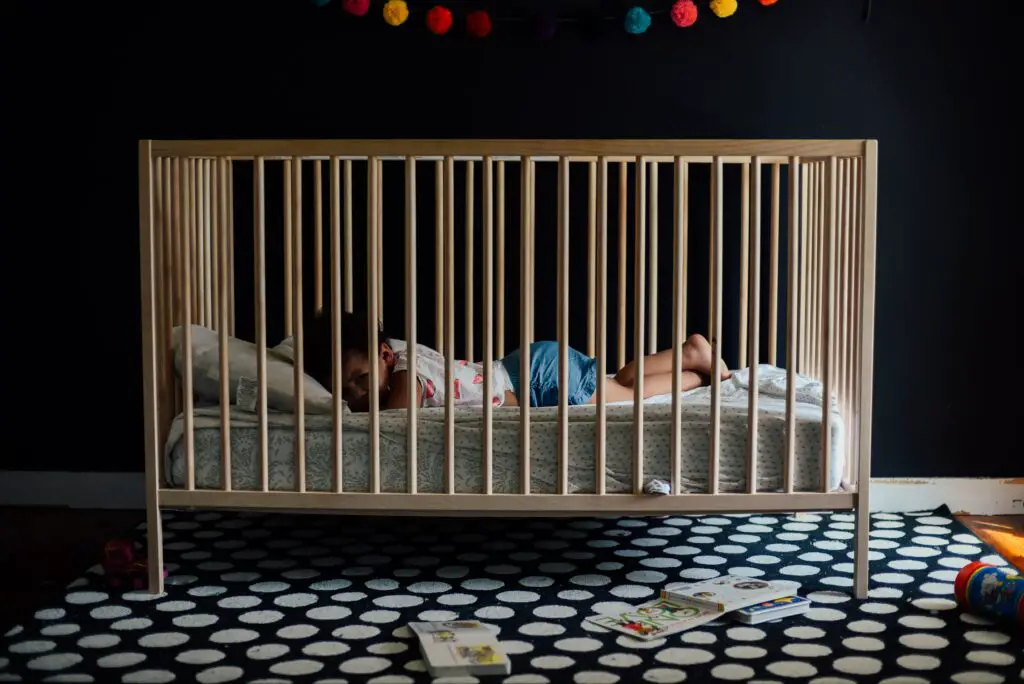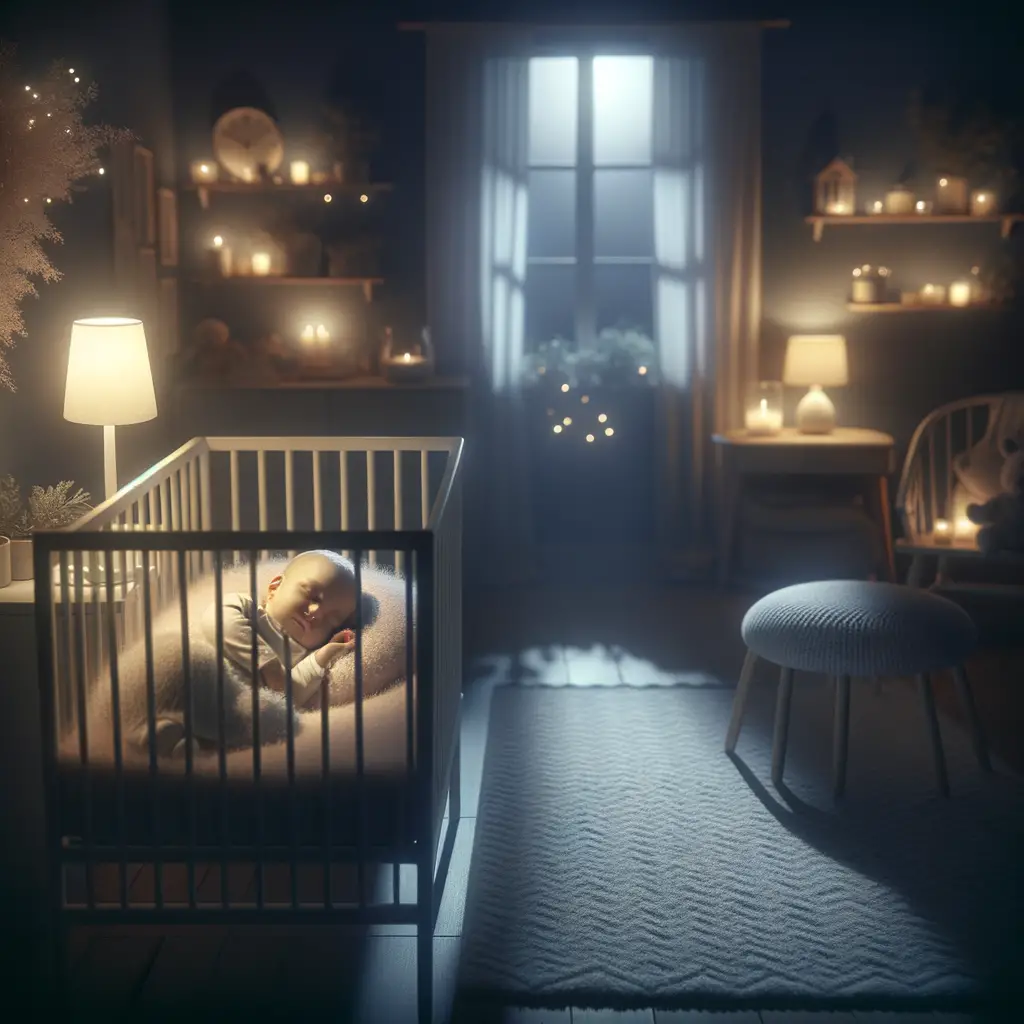Introduction to Baby Sleep and Light Color
Understanding the needs of a baby is crucial for every parent. One of the most important aspects of a baby’s health and development is their sleep. In this article, we will delve into the importance of baby sleep and the role of light color in promoting healthy sleep patterns.
Importance of Baby Sleep
Sleep plays a vital role in the growth and development of a baby. According to the American Academy of Pediatrics, babies need up to 16 hours of sleep a day during their first year of life. This sleep is crucial for their brain development, physical growth, and immune system. Lack of proper sleep can lead to issues like irritability, difficulty in learning, and even health problems like obesity and diabetes later in life.
Role of Light Color in Baby Sleep
Light color can significantly impact a baby’s sleep. Studies have shown that certain colors of light can stimulate the brain, while others can help soothe and relax. For instance, blue light, commonly emitted by electronic devices, can interfere with the production of melatonin, a hormone that regulates sleep. On the other hand, red or warm-colored lights can help promote sleep by creating a calming environment. Understanding the role of light color in baby sleep can help parents create the optimal sleep environment for their little ones.
In the following sections, we will delve deeper into the effects of light color on baby sleep, discuss the best light color for baby sleep, and explore other factors affecting baby sleep. Stay tuned to learn more about achieving the best sleep for your baby.
Understanding the Effects of Light Color on Baby Sleep

Light color can significantly impact a baby’s sleep. Various scientific studies have explored this relationship, providing valuable insights into how different light colors can affect a baby’s sleep patterns. Let’s delve into two such studies to understand this better.
Scientific Studies on Light Color and Baby Sleep
Study 1: Light color impact on baby sleep
A study conducted by the University of Toronto found that the color of light can influence a baby’s sleep. The study revealed that blue light tends to stimulate alertness, while red light promotes sleepiness. This is because blue light suppresses the production of melatonin, a hormone that helps regulate sleep, more than any other light color. On the other hand, red light has the least power to shift circadian rhythm and suppress melatonin.
Study 2: Optimal light color for baby sleep
Another study published in the Journal of Sleep Research focused on identifying the optimal light color for baby sleep. The researchers found that dim red light was the most conducive for promoting sleep in babies. They concluded that using a dim red night light in the baby’s room could help improve their sleep quality.
These studies highlight the importance of considering light color when setting up your baby’s sleep environment. By understanding the effects of different light colors, you can create an environment that promotes better sleep for your baby.
Practical Examples of Light Color Effects on Baby Sleep
Let’s delve into some real-life examples that illustrate how different light colors can influence a baby’s sleep. These case studies provide practical insights into the best light colors for promoting healthy sleep in infants.
Case Study 1: Baby Sleep Light Color Recommendations
In this case study, a new mother was struggling to get her 6-month-old baby to sleep through the night. After trying various techniques, she decided to experiment with different light colors in the baby’s room. She found that a soft, warm light color, specifically a dim orange hue, seemed to soothe her baby and help him fall asleep faster. This aligns with scientific research suggesting that warmer light colors can help promote sleep by mimicking the natural colors of sunset, a time when our bodies naturally prepare for sleep.
Case Study 2: Sleep-Inducing Light Colors for Babies
In another case study, a pair of first-time parents were having difficulty establishing a consistent bedtime routine for their 9-month-old baby. They decided to try using a night light that emitted a soft red glow. To their surprise, their baby started to fall asleep more easily and woke up less frequently during the night. This supports the idea that red light, which has the least power to shift circadian rhythm, can be beneficial for baby sleep.
These case studies highlight the potential benefits of using the right light color to improve baby sleep. However, it’s important to remember that every baby is unique, and what works for one may not work for another. Always observe your baby’s reactions and adjust accordingly to find the best solution for your little one’s sleep needs.
Best Light Color for Baby Sleep
Choosing the right light color for your baby’s room can significantly influence their sleep quality. The right light color can help soothe your baby, making it easier for them to fall asleep and stay asleep. Here are the top recommended light colors for baby sleep.
Top Recommended Light Colors for Baby Sleep
Light Color 1: Red
Red light is often recommended for baby sleep. This color is less likely to suppress melatonin, the hormone that regulates sleep. Therefore, using a red light in your baby’s room can help maintain their natural sleep cycle. It’s also a calming color that can help soothe your baby to sleep.
To use red light effectively, consider investing in a red light bulb for your baby’s night light. You can also use a red light setting if your baby monitor or other devices in your baby’s room have this feature.
Light Color 2: Orange
Like red, orange is a warm color that can help promote sleep. It’s also less likely to interfere with melatonin production. Orange light can create a cozy and comforting environment, which can help your baby feel safe and relaxed.
Using orange light in your baby’s room can be as simple as choosing an orange light bulb for their night light. If you’re using a device with adjustable light colors, you can set it to an orange hue.
Remember, every baby is unique, and what works for one might not work for another. It’s important to observe your baby’s reactions to different light colors and adjust accordingly. The goal is to create a sleep-friendly environment that helps your baby get the rest they need.
Color Light Therapy for Baby Sleep

Color light therapy, also known as chromotherapy, is a method that uses the colors of the light spectrum to improve health and well-being. It is a non-invasive and gentle approach that can be particularly beneficial for babies’ sleep patterns. Let’s delve into understanding this therapy and how to use it for your baby’s sleep.
Understanding color light therapy
Color light therapy is based on the idea that different colors evoke different responses in people. For instance, blue light is known to suppress the production of melatonin, a hormone that helps regulate sleep. On the other hand, red light is less likely to shift circadian rhythm and suppress melatonin. According to research, using the right color light at the right time can help improve sleep quality.
How to use color light therapy for baby sleep
Using color light therapy for your baby’s sleep involves choosing the right color light and using it at the right time. Here are some steps you can follow:
Choose the right color: Red or orange lights are often recommended for baby’s sleep as they are less likely to interfere with the production of melatonin.
Time it right: Use the light during the bedtime routine to signal to your baby that it’s time to sleep.
Intensity: The light should be dim and soothing, not bright and stimulating.
Remember, every baby is unique and what works for one might not work for another. It’s important to observe your baby’s response and adjust accordingly.
Additional Factors Affecting Baby Sleep
While light color plays a significant role in baby sleep, there are other factors that also contribute to the quality of your baby’s sleep. One of these factors is sound. Let’s delve into the role of sound in baby sleep.
Role of Sound in Baby Sleep
Sound is a powerful tool that can either enhance or disrupt your baby’s sleep. It’s important to understand its impact and how to use it to your advantage.
Impact of Sound on Baby Sleep
Sound can have a profound effect on your baby’s sleep. Loud, sudden noises can startle your baby and wake them up, disrupting their sleep cycle. On the other hand, certain sounds can soothe your baby and help them fall asleep. According to a study, white noise can help babies fall asleep 38% faster than without it.
Best Sounds for Baby Sleep
When it comes to the best sounds for baby sleep, white noise is at the top of the list. White noise is a consistent sound that masks other noises that might wake your baby. Examples of white noise include the sound of a fan, air conditioner, or a white noise machine. Lullabies and soft music can also be beneficial. Remember, the key is consistency and ensuring the sound is not too loud.
In conclusion, sound plays a crucial role in your baby’s sleep. By understanding its impact and using the right sounds, you can improve the quality of your baby’s sleep.
Role of Temperature in Baby Sleep
Temperature plays a crucial role in ensuring a good night’s sleep for your baby. It’s not just about comfort; it’s about safety too. Let’s delve into the impact of temperature on baby sleep and the optimal temperature for baby sleep.
Impact of Temperature on Baby Sleep
The temperature of the room where your baby sleeps can significantly affect their sleep quality. A room that is too hot can make your baby uncomfortable, leading to restlessness and frequent wake-ups. On the other hand, a room that is too cold can cause your baby to wake up due to discomfort. According to a study on sleep and temperature, maintaining an optimal room temperature can help promote longer and more restful sleep for your baby.
Optimal Temperature for Baby Sleep
So, what is the optimal temperature for baby sleep? Most experts agree that the ideal room temperature for a sleeping baby is between 68 and 72 degrees Fahrenheit (20-22 degrees Celsius). This range provides a comfortable and safe sleeping environment for your baby. However, it’s important to remember that every baby is different. What works for one baby may not work for another. Therefore, it’s crucial to monitor your baby’s comfort and adjust the room temperature accordingly.
In conclusion, maintaining the right temperature in your baby’s room is essential for their sleep quality and safety. By understanding the impact of temperature on baby sleep and knowing the optimal temperature for baby sleep, you can create a comfortable and safe sleeping environment for your baby.
Conclusion: Achieving the Best Sleep for Your Baby
As we conclude our discussion on baby sleep and light color, it’s important to recap the key points and share some final thoughts. Our aim has always been to help you understand how to achieve the best sleep for your baby.
Recap of baby sleep light color recommendations:
Throughout this post, we’ve emphasized the importance of light color in your baby’s sleep environment. We’ve learned that light color can significantly impact your baby’s circadian rhythm, and therefore, their sleep quality.
Red and orange hues are the most recommended for promoting sleep, as they mimic the natural colors of sunset, signaling to the baby’s brain that it’s time to rest. On the other hand, blue and white lights should be avoided, especially before bedtime, as they can stimulate alertness and disrupt sleep.
Final thoughts on baby sleep and light color:
While light color plays a crucial role, it’s just one piece of the puzzle. Other factors like room temperature, noise levels, and a consistent bedtime routine also contribute to your baby’s sleep quality. It’s about creating a sleep-friendly environment that caters to your baby’s unique needs.
Remember, every baby is different. What works for one might not work for another. Therefore, it’s essential to observe your baby’s reactions and adjust accordingly. With patience and consistency, you’ll find the perfect balance that ensures your little one gets the rest they need to grow and thrive.
In conclusion, understanding the effects of light color on baby sleep is a powerful tool in your parenting arsenal. Use this knowledge to create a serene and sleep-friendly environment for your baby. Here’s to many nights of peaceful slumber!














